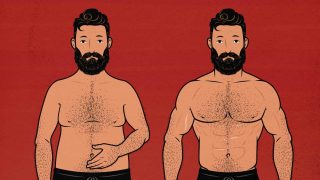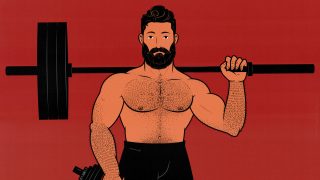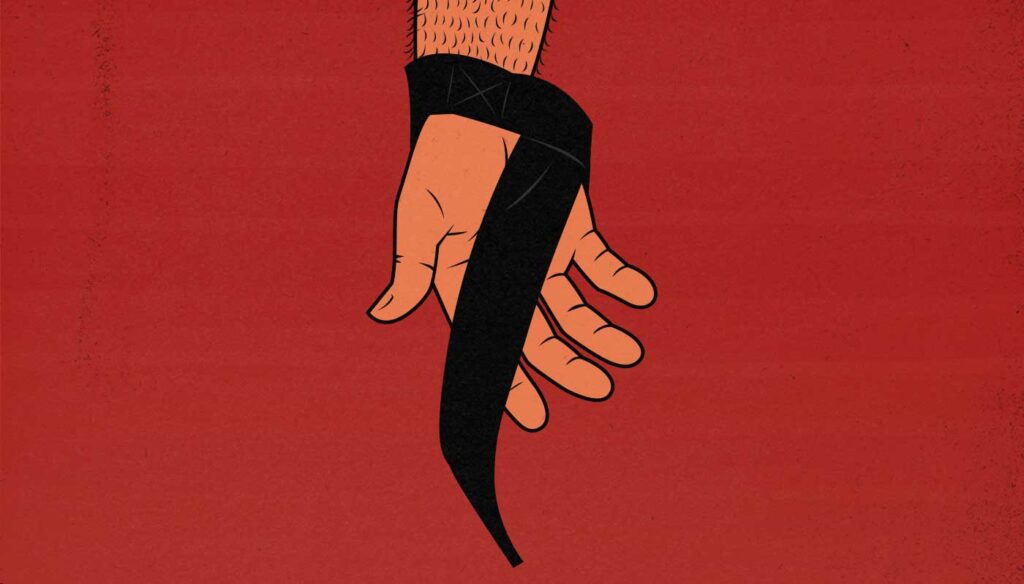
The Best Lifting Straps & Grips for Building Muscle
When you first start lifting weights, it’s common for your grip to be a limiting factor. After all, if you’ve never trained your grip, it’s probably weak. And since you need to grip the bar during every single exercise, it’s easy for a weak grip to plague your workout routine. Fortunately, your grip will quickly become stronger, and it will stop being a limiting factor on most lifts.
But some lifts work huge muscle grips, allowing you to lift massive amounts of weight. Think of the conventional deadlift, which works your glutes, quads, and hamstrings—three of the biggest muscles in your body. Your grip won’t be able to keep up. To get around that problem, you can learn the mixed grip, the hook grip, use chalk, or use tape. All of those methods can work. But a much simpler option is to get some lifting straps.
Lifting straps do two things. They let the bar hang from your wrist instead of from your grip, and they prevent the barbell from rolling in your hands, keeping it steady. This allows you to worry less about your grip, more about the muscles you’re actually trying to train. You can row with your upper back, deadlift with your hips, and shrug with your traps—all without needing to worry about the bar rolling out of your hands.
So, that brings us to the next question: what are the best lifting straps to buy? And the answer to that question is a bit surprising. You shouldn’t buy lifting straps at all. You should get lifting grips instead.
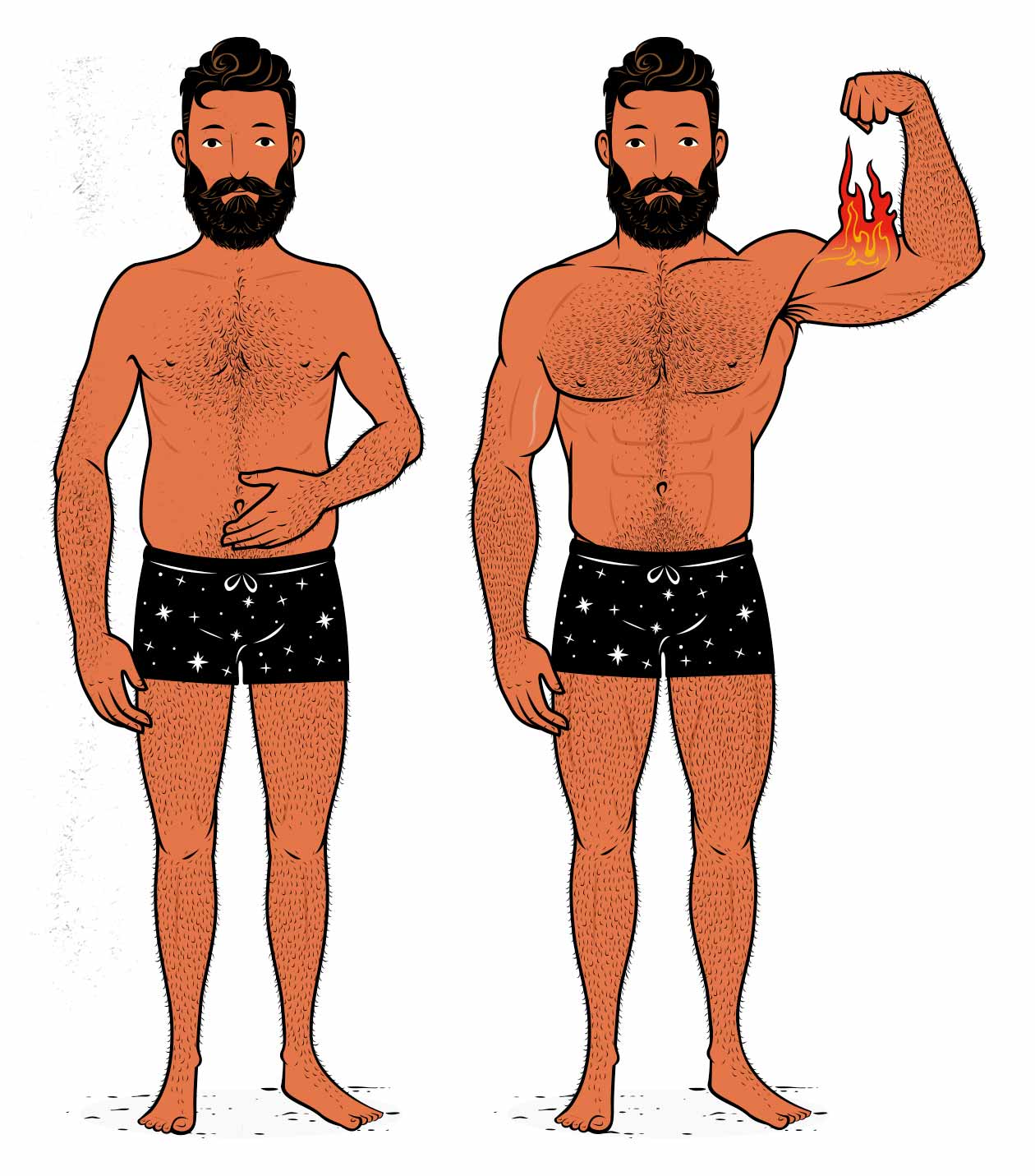
Should You Use Lifting Straps?
There’s a debate among lifters. Some argue that we should strengthen our grip so that it’s never a limiting factor. They usually recommend doing lots of heavy barbell work, often including loaded carries and barbell holds that are designed to strengthen the grip. And there’s some truth to this. If your grip is weak, you can become reliant on lifting straps. That can be a problem for a lot of beginners.
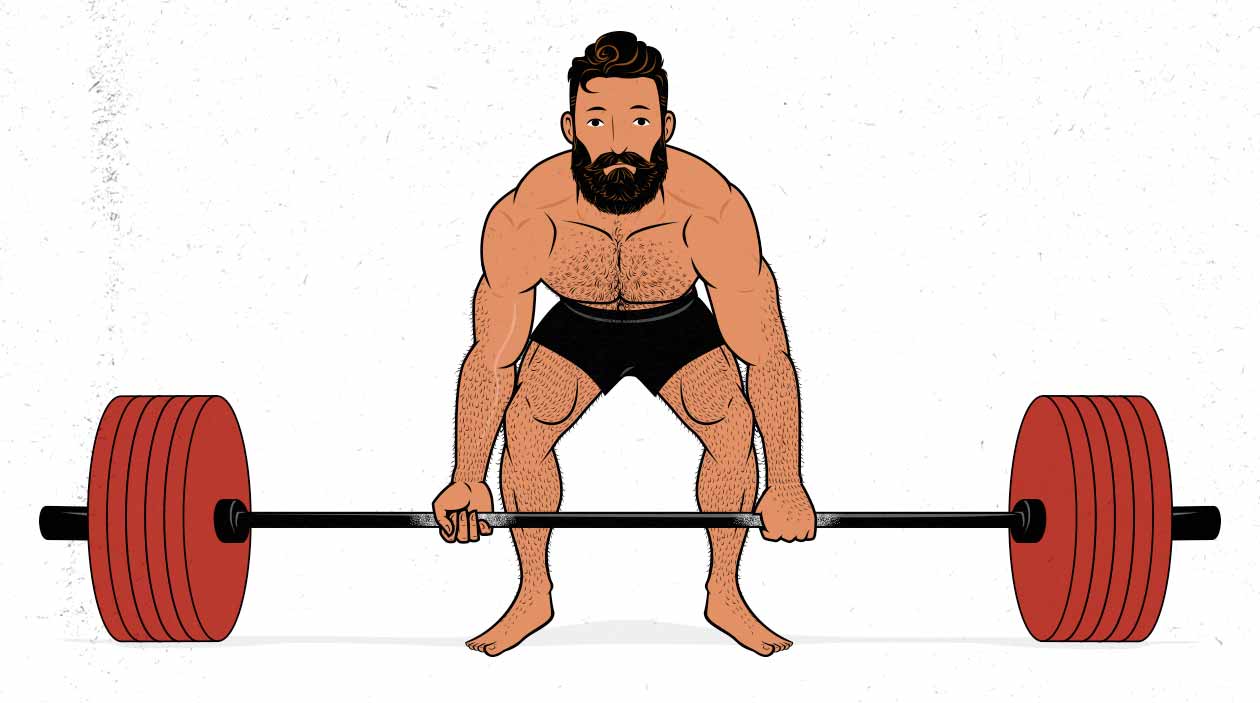
Others argue that unless we use a mixed grip, hook grip, lifting chalk, or lifting tape, we’ll always be limited by our grip on the heavier compound lifts, interfering with our ability to build muscle. For example, if you do a set of Romanian deadlifts for 10 reps, your grip might give out before your hips and hamstrings have been brought close to failure. As a result, most of the growth stimulus will go to your grip muscles, not to the muscles you were actually trying to train. And that’s true. This is a real problem, especially for stronger lifters.
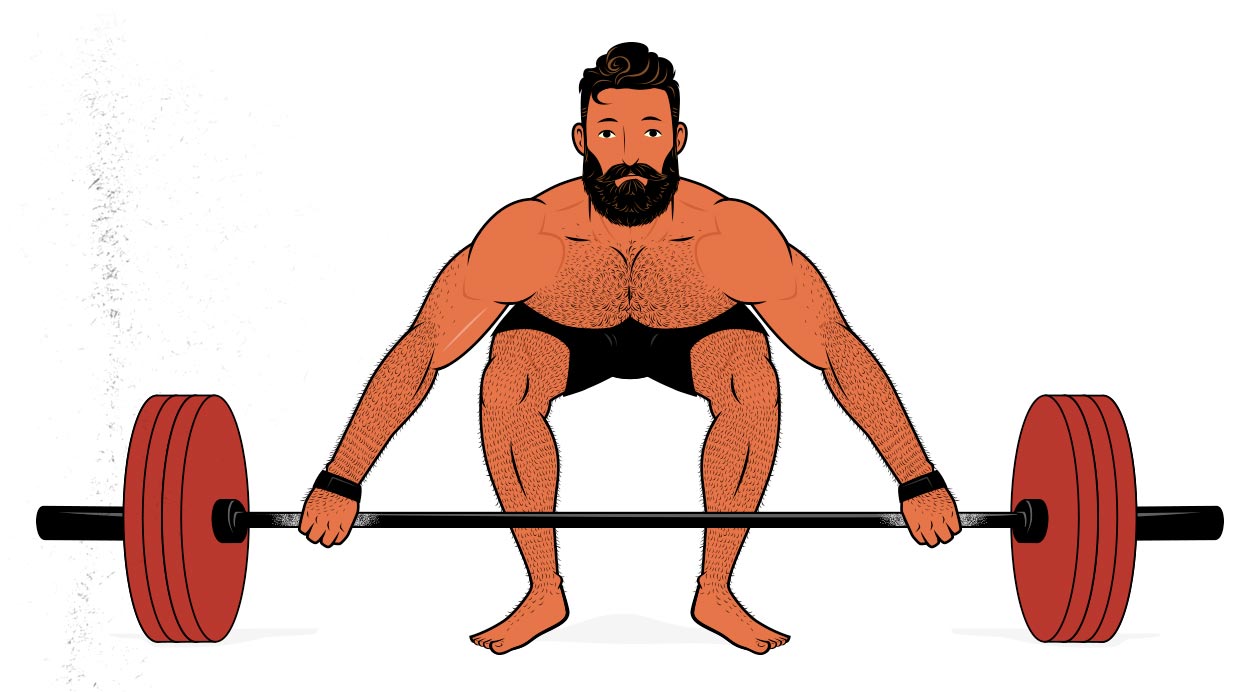
There’s also a genetic component to grip strength. That’s true of our strength overall, but it’s especially true of our grip strength, which has 7% more genetic variability (study, study). This gets even more exaggerated when we compare men against women (study). The best female athletes in the world have a weaker grip strength than the majority of men, including those who don’t even exercise (study). So, even with dedicated grip training, it’s just one of those things—there’s some luck involved.
Overall, whether you use lifting straps depends on your goals and your genetics. If you have a naturally stronger grip, you’re interested in powerlifting, and you don’t mind some pain and calluses, then you probably don’t need lifting straps. But if your grip is naturally weaker, you’re interested in building muscle in your hips and back, and you want to make lifting weights more convenient, lifting straps can be a real boon.
Lifting Straps
What are Lifting Straps?
Lifting straps are straps connect your wrists to a barbell, preventing it from slipping out of your hands.
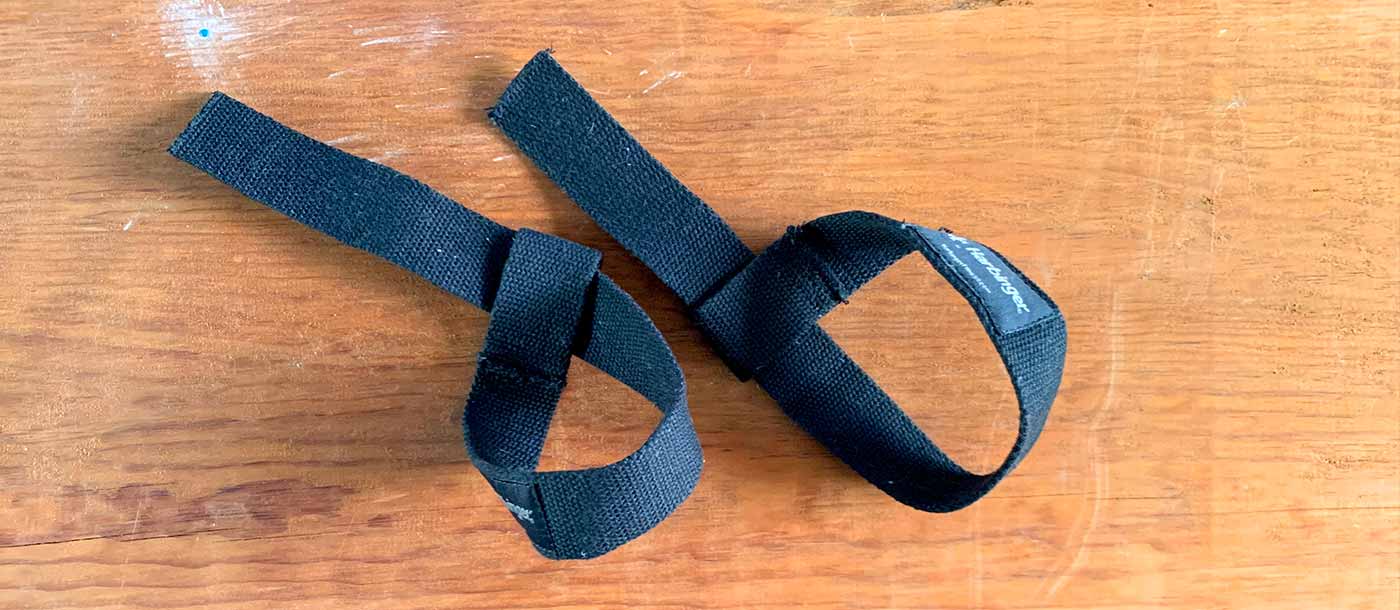
On heavier compound pulling lifts, such as deadlifts, Romanian deadlifts, barbell rows, and barbell shrugs, your grip is often your limiting factor. By removing your grip from the equation, lifting straps allow you to lift more weight or get more repetitions, stimulating more muscle growth in your pulling muscles: your glutes, hamstrings, spinal erectors, and upper back.
How to Use Lifting Straps
To use lifting straps, you slip your wrist into the loop and then wrap the straps around the bar. This straps your wrists to the barbell, preventing it from rolling out your grip.
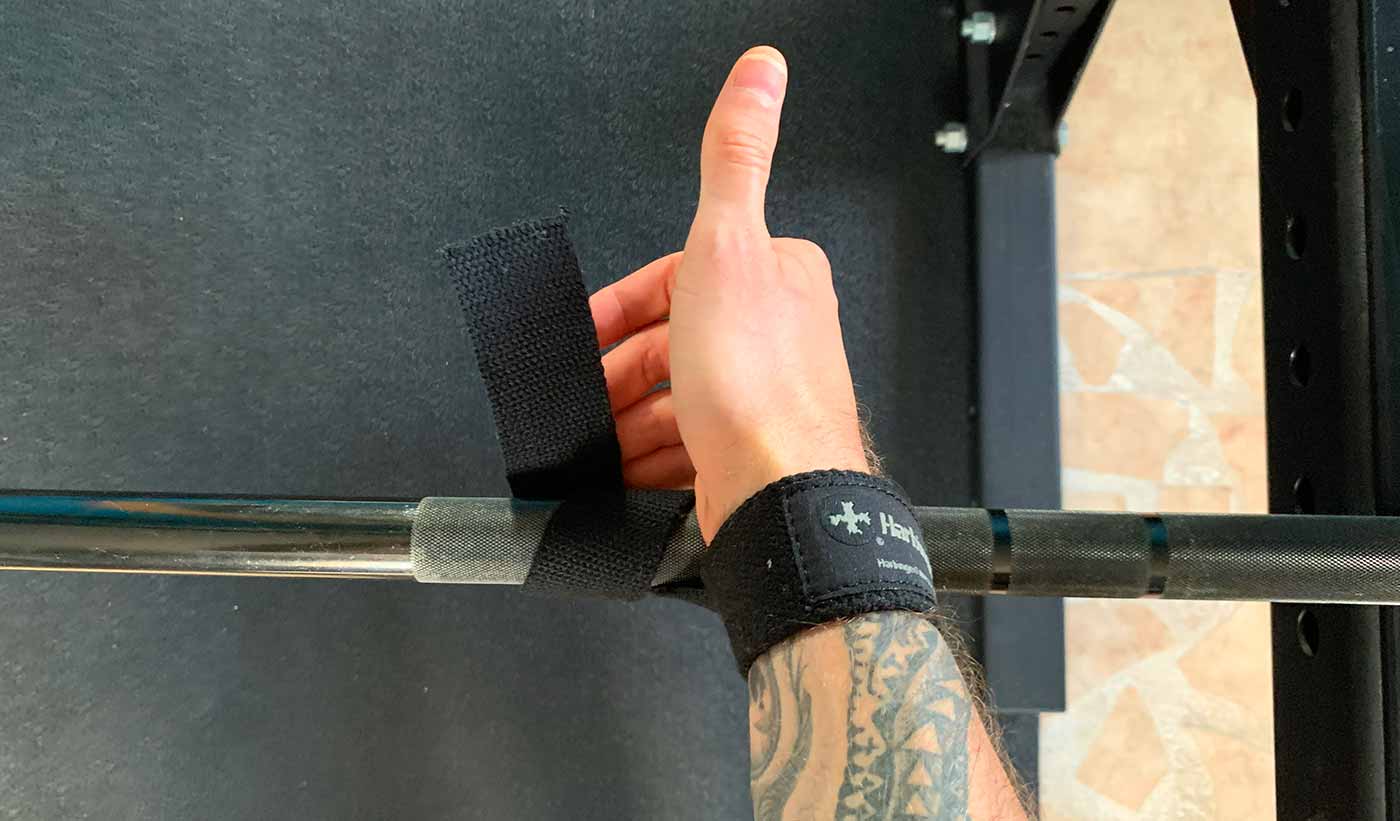
If you’re reading that description, looking at the photo, and thinking that it’s a little bit confusing and convoluted, you’re correct. There’s a much easier way to get the benefits of lifting straps, which we’ll cover in a moment.
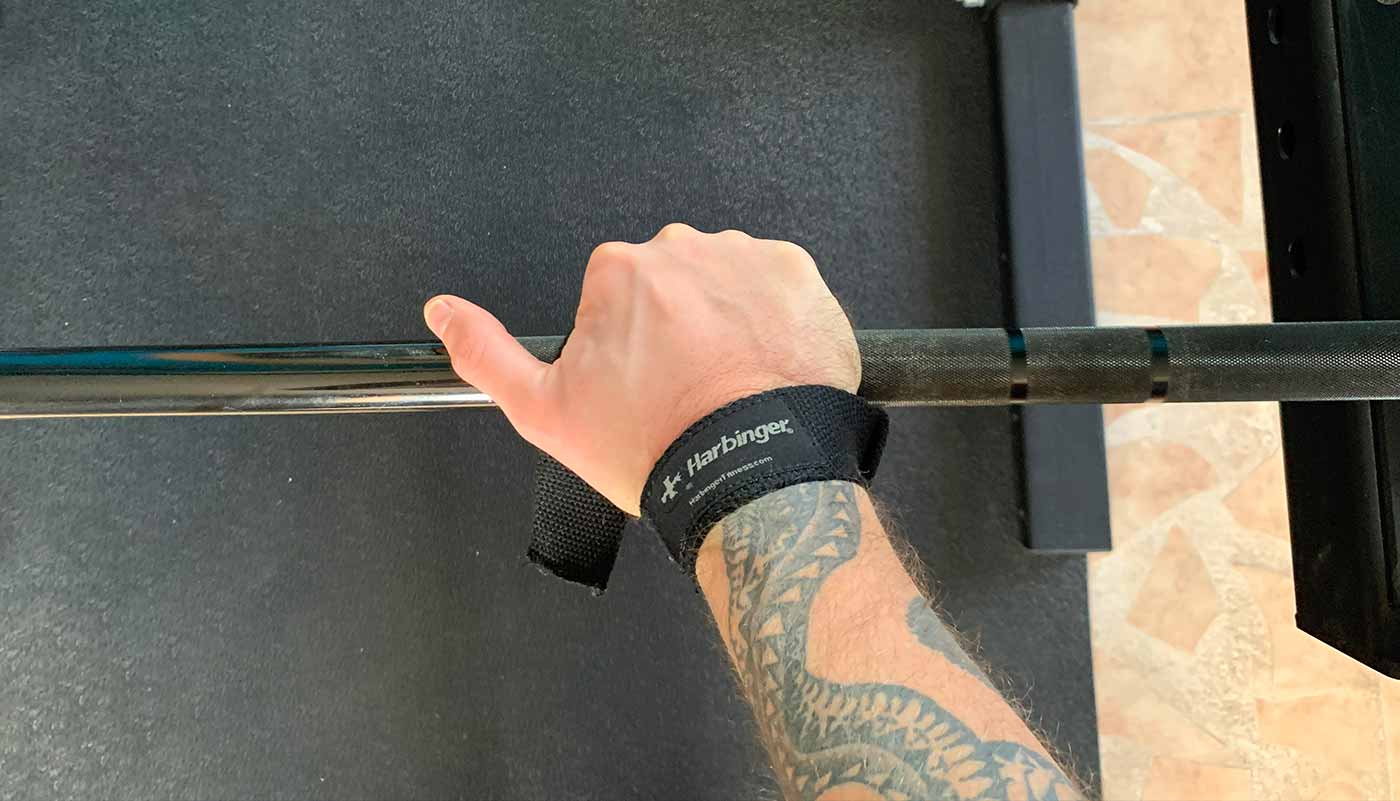
The main point, though, is that once you learn how to use lifting straps, they work very well. They’re comfortable, safe, and effective. Durable, too. And your grip will never be a limiting factor again.
Lifting Grips
What are Lifting Grips?
Lifting grips connect your wrists to a barbell, preventing it from slipping out of your hands. They do the exact same thing as lifting straps, it’s just a different way of connecting your wrists to the bar.
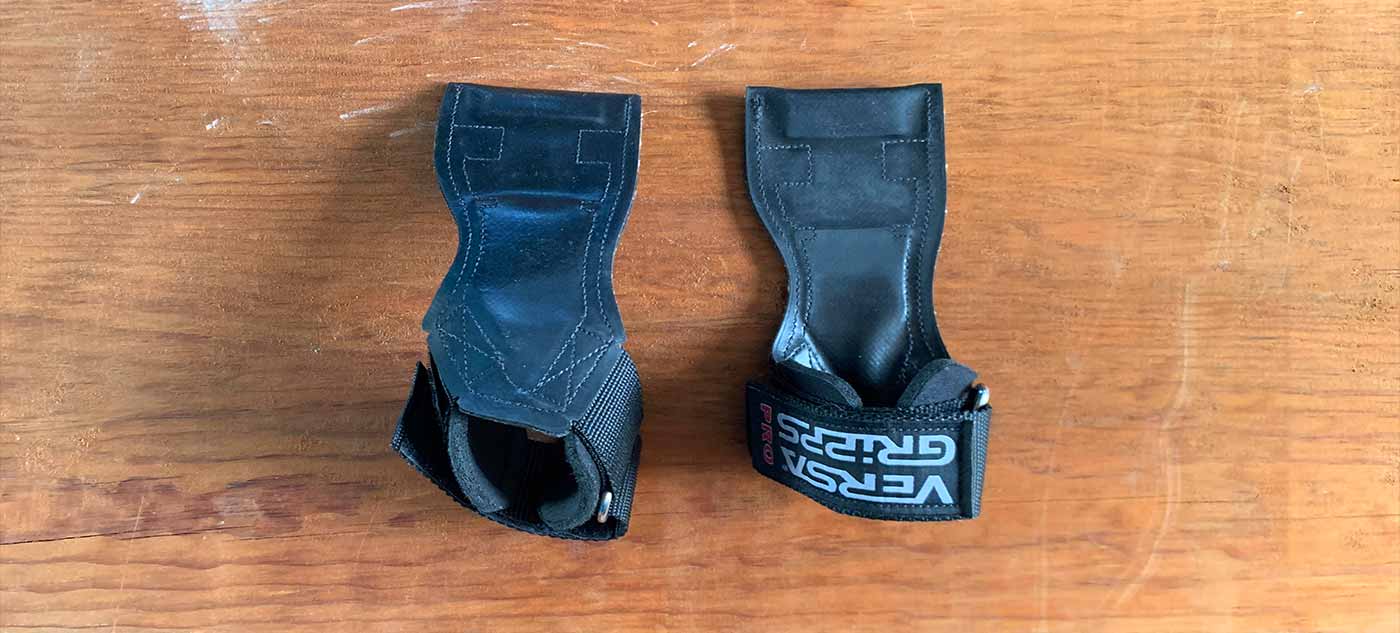
What makes lifting grips different from lifting straps is that they fasten to your wrists using a velcro, and then fold over the bar just once. This makes them more convenient to use.
How to Use Lifting Grips
To use lifting grips, you fasten it around your wrist using the velcro, and then you slip the loop under the barbell, like so:
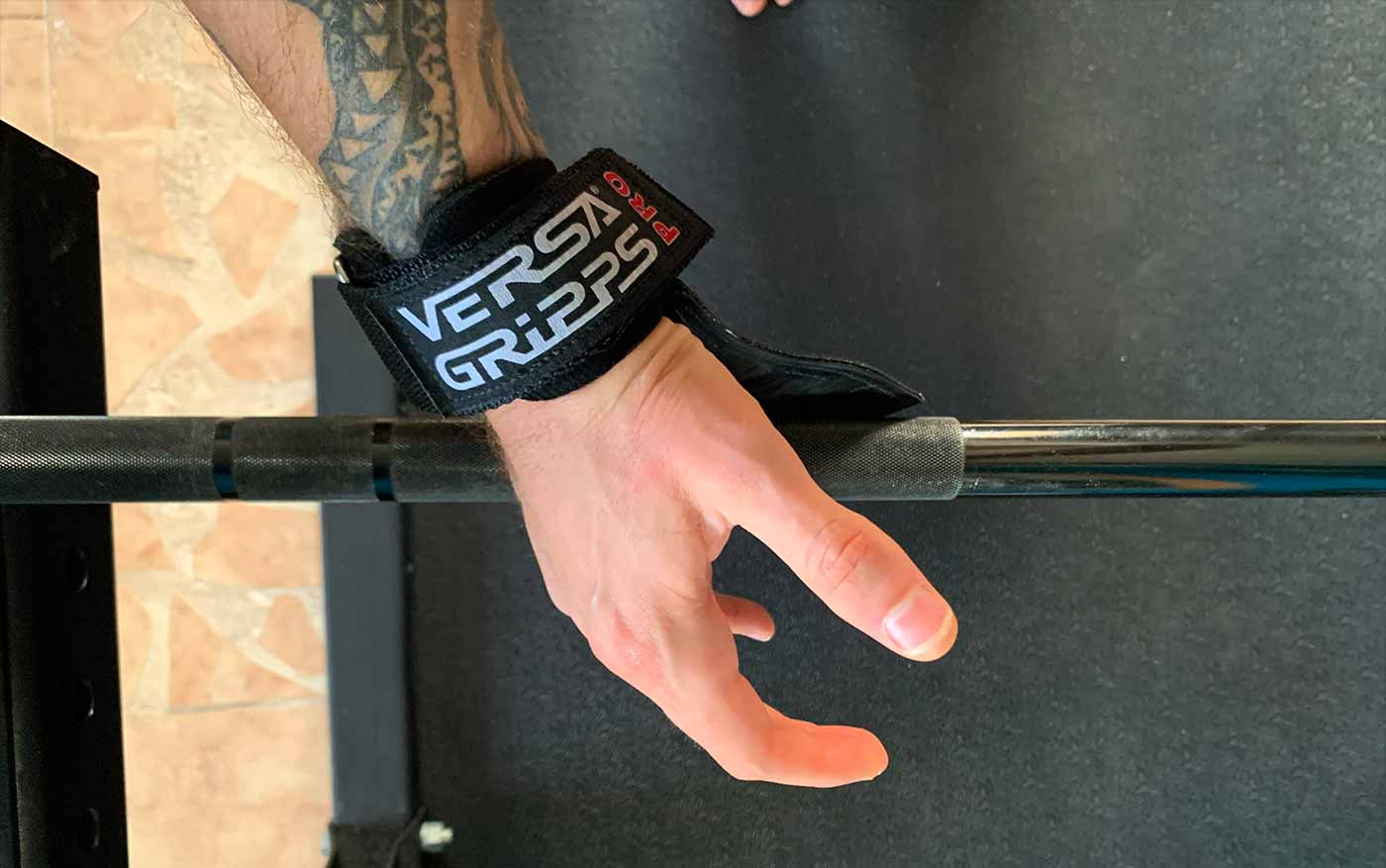
With the loop under the barbell, you can simply grab it, like so:

You get to hold onto something that cannot roll out of your grip. Plus, much of the weight pulls on your wrists instead of against your fingers.
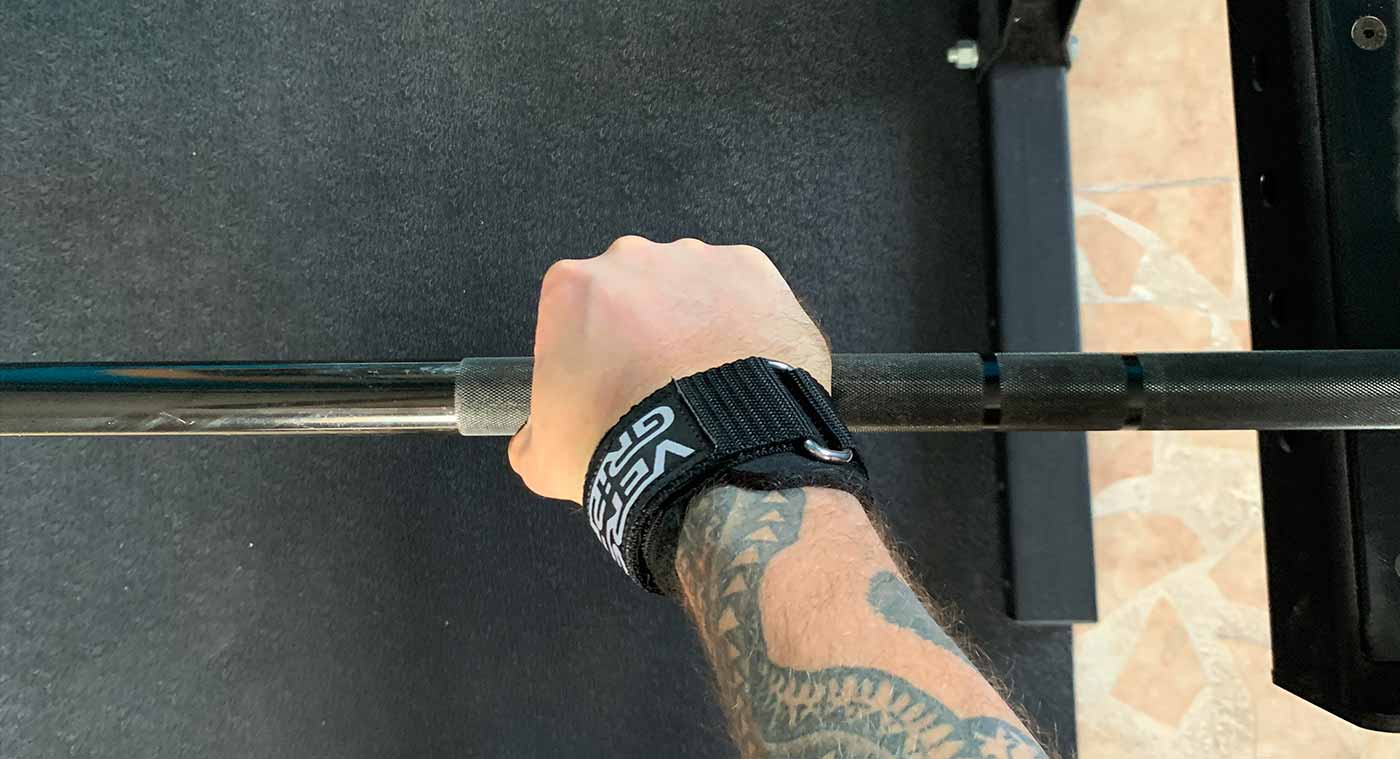
This gives you the exact same benefits as lifting straps. In fact, looking from overhead, you’ll notice that lifting straps and lifting grips look exactly the same.
Why Lifting Grips are Better than Lifting Straps
I first heard of lifting grips from the hypertrophy expert, Mike Israetel, PhD. He was recommending them for barbell rows, saying that if our grip is the limiting factor, we won’t be able to fully stimulate our upper back. What surprised me was that he didn’t recommend lifting straps, he specifically recommended lifting grips. And he was excited about it, too. His passion was clear. He was completely unaffiliated with the company, but he loved his lifting grips.
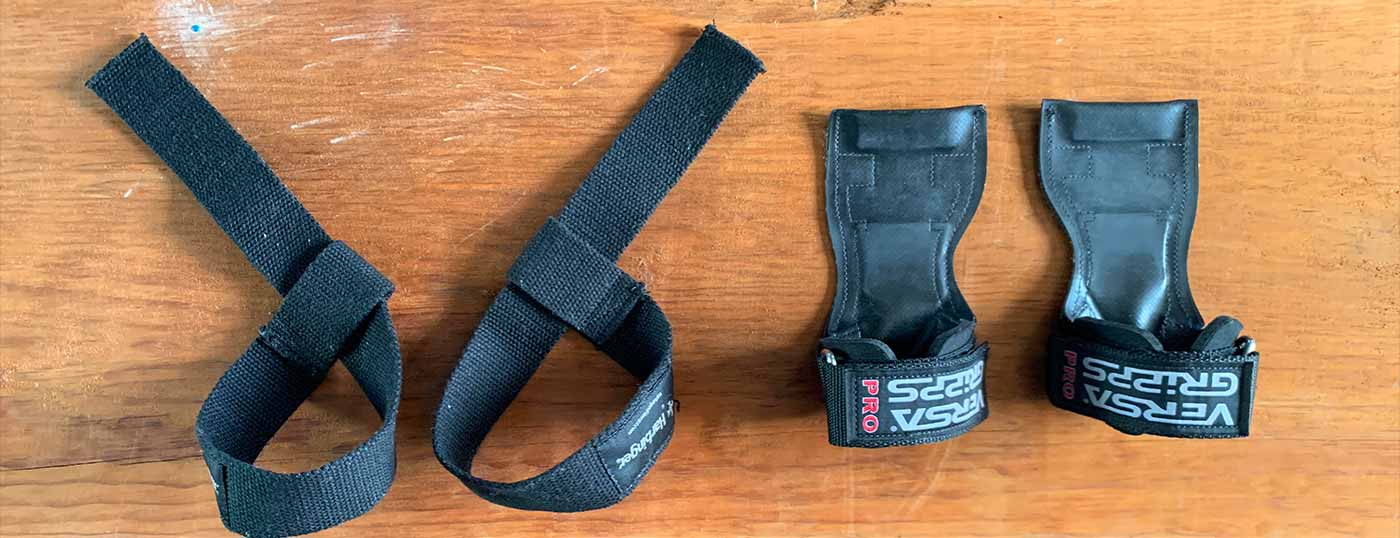
At first, the benefit is hard to see. Both lifting straps and lifting grips accomplish the same purpose. They strap your wrist to the barbell, preventing it from falling out your grip. Both are equally effective, and you’ll get the same results from either one. So why are lifting grips better?
I was curious. I immediately ordered a pair of classic lifting straps and lifting grips. I started playing around with both, alternating between the two from set to set. The lifting grips were way faster to use, way more comfortable, and way simpler. But just to make sure I wasn’t crazy, I tested them out on my wife. She found the straps a pain to use, but she absolutely loved the grips. Ever since, she’s been using them for her deadlifts and rows.
So the benefit has nothing to do with building muscle. The benefit is merely that lifting grips are dead simple to use. Wrap the velcro around your wrist, slip the loop under the barbell, and start lifting. That’s all there is to it. They aren’t finicky, they don’t require any practice to use, and they’re easy to let go of when you finish your set.
The Best Lifting Straps & Grips
I tested two of the companies with the best reputation: Harbinger and Versa. There’s very little difference between the companies, though. The benefit is in using lifting grips instead of lifting straps.
For example, Harbinger makes both lifting straps and grips:
Both are of similar quality, both are similarly effective, and both are similarly priced, but the lifting grips are significantly more comfortable and easy to use.
Personally, I chose to get Versa Gripps. They’re twice as expensive as the Harbinger lifting grips, but they were the brand that Mike Israetel recommended, so I wanted to give them a try. And they’re great. I really like them. And just to make sure their durability held up, I used them for a full year before writing this review. They still look brand new.

There are other brands of lifting grips, too, such as these JerkFit Death Grips, which have a rad aesthetic to them. They’re sold by my favourite fitness retailer, Rogue Fitness (which is where I bought my entire barbell home gym). I’m temped to get them so that I can compare them against the Versa Grips… but I suspect they’re exactly the same. Quality is not a limiting factor here. I’ve used dozens of brands over the years, many of them at busy commercial gyms. All of these lifting straps and grips are overbuilt.
*These are all affiliate links. With that said, we make a higher percentage from the Harbinger/JerkFit straps and grips, but we’re recommending Versa as the best default option instead, going against our financial bias. I suspect that the quality of the Versa Gripps is higher.
Summary
Lifting straps and lifting grips can help you lift more weight and get more repetitions on heavy pulling movements, such as deadlift variations, barbell rows, and barbell shrugs. You don’t need them. You could train your grip strength, use a mixed or hook grip, and get some lifting chalk or tape instead. But lifting straps and grips make it much easier and more convenient to stimulate muscle growth on those heavy pulling movements.

Both lifting straps and lifting grips are equally effective. You can use either one. But lifting grips are way simpler and more convenient to use. There’s no downside to them, they’re just better. They accomplish the same purpose with less fuss.
Versa Gripps is famous for making the best lifting grips on the market, and after testing them for over a year, I agree. They’re amazing. I highly recommend them. But there are cheaper versions available from Harbinger and JerkFit that should be equally effective and convenient.

If you want a customizable workout program (and full guide) that builds these principles in, then check out our Outlift Intermediate Bulking Program. If you liked this article, you’ll love the full program. Or, if you’re still skinny or skinny-fat, try our Bony to Beastly (men’s) program or Bony to Bombshell (women’s) program.
Shane Duquette is the co-founder of Outlift, Bony to Beastly, and Bony to Bombshell. He's a certified conditioning coach with a degree in design from York University in Toronto, Canada. He's personally gained 70 pounds and has over a decade of experience helping over 10,000 skinny people bulk up.


